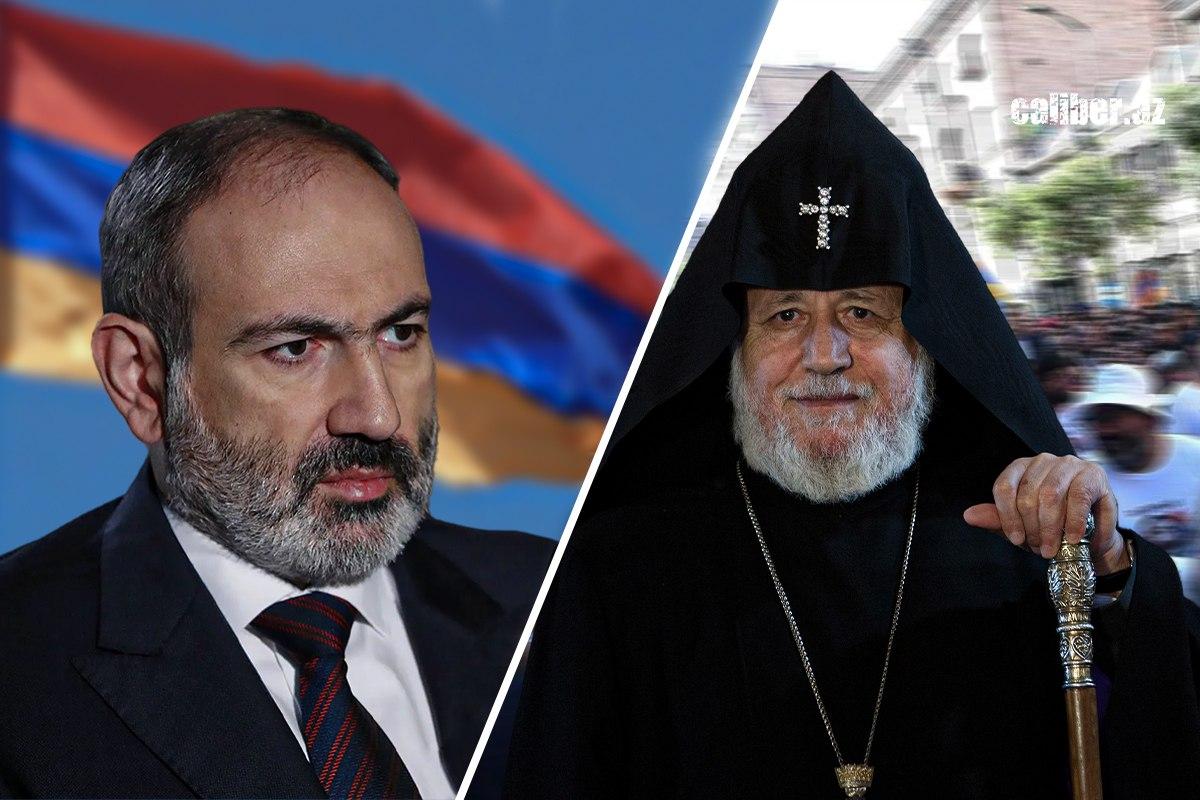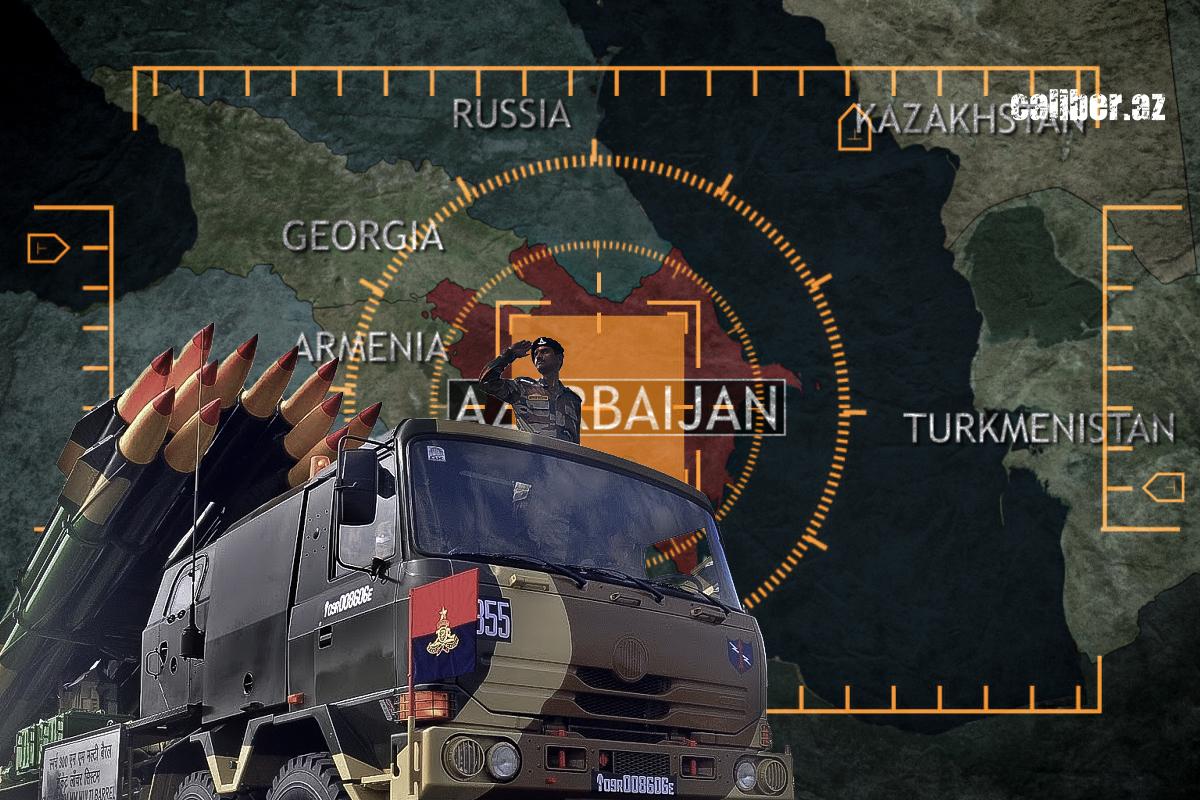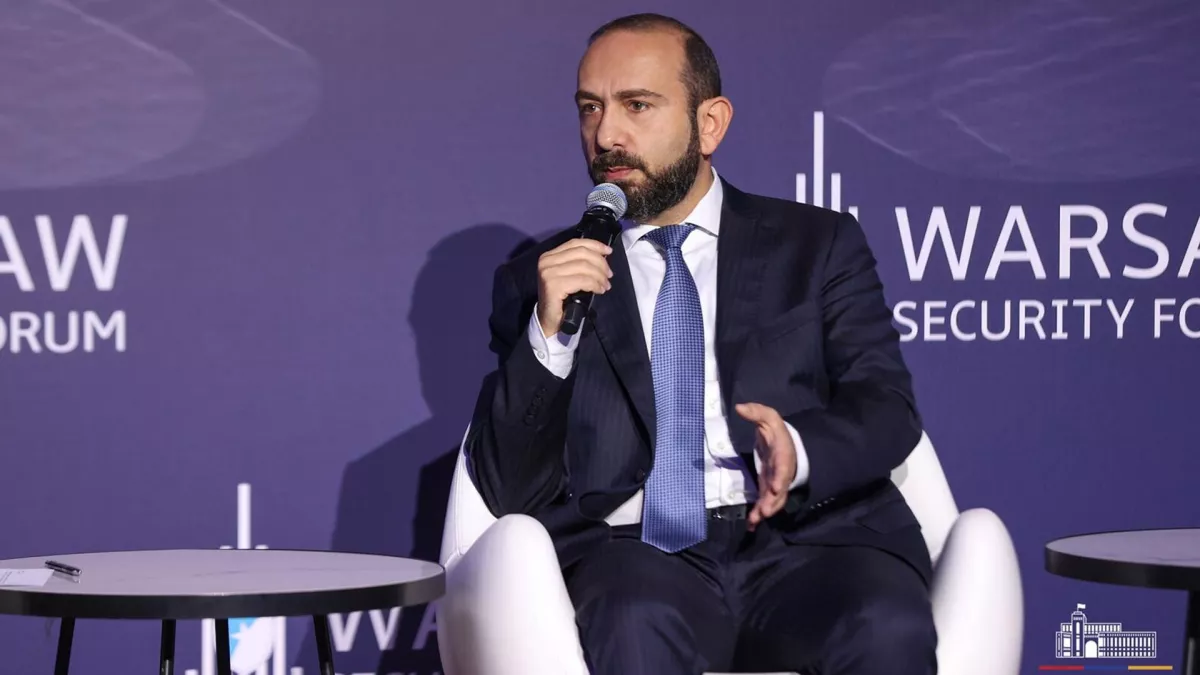EAEU membership, Brussels dreams: Armenia's fence-sitting strategy Opportunism and dogmatism
The week commenced with significant developments in the Eurasian Economic Union (EAEU) taking place in Yerevan. The Armenian establishment cherishes the Russia-linked union for the remarkable advantages it has provided, especially in enhancing trade via Armenia since 2022, often circumventing Western sanctions. Prime Minister Nikol Pashinyan has been careful to navigate these waters without creating misunderstandings. Alongside the EAEU events in Yerevan, he dispatched high-ranking emissaries not only to NATO but also to perhaps the most radical forum of Euro-Atlantic hawks. This blend of Armenian foreign policy is a complex tapestry woven from opportunism and dogmatism, yet it remains devoid of a long-term strategy — one that could only emerge through peace and normalization with Azerbaijan and the restoration of historical unity in the region via unblocking communications.
Military billions
On September 30, Yerevan hosted a meeting of the Intergovernmental Council of the EAEU, a biannual gathering of prime ministers, alongside the Eurasian Economic Forum. The Armenian government continues its participation in the EAEU, with Prime Minister Pashinyan reiterating at the “World Armenian Summit” on September 18 that there are no intentions to reduce trade or sever ties with Russia and the EAEU. This stance stands in stark contrast to Armenia's de facto withdrawal from the Collective Security Treaty Organization (CSTO), which has been marred by scandal, transforming the CSTO into a farcical entity time and again.

Russia holds a prominent position in both the CSTO and the EAEU, allowing Yerevan to navigate one of its projects while capitalizing on the other. However, historically, the Russian Empire, the USSR, and the Russian Federation have struggled with strategically coherent policies. This has led to the failure of external alliances or produced ambiguous results for Moscow, especially when even marginal allies began to exploit these relationships.
Prime Minister Nikol Pashinyan's motivation for maintaining membership in the EAEU is quite clear. He seeks a boost for the Armenian economy, albeit a somewhat inflated one, made possible through trade that circumvents Western sanctions. This has turned Armenia into a conduit for capital withdrawal and an escape route for Russian citizens leaving the Russian Federation. For context, the final statistics for 2023 reveal that Russian exports to Armenia surged from $2.738 billion in 2022 to $4.372 billion, while imports from Armenia to Russia increased from $2.064 billion to $3.083 billion. This resulted in a vital source of foreign exchange earnings for Yerevan, with the surplus rising from $673 million to $1.289 billion. For a small and impoverished nation, this amount is significant.
This growth appears even more impressive when compared to figures from the pre-war years. Due to its opportunistic nature, this economic surge can be likened to a bubble, destined to burst once the conflict ends or if Western powers pressure Pashinyan to halt such activities. Nonetheless, for now, the momentum continues, with Armenian officials happily announcing a 7.3% increase in Armenia's trade turnover with EAEU countries (primarily with Russia) from January to August this year. However, Arman Khojoyan, Deputy Head of Armenia's Ministry of Economy, noted that unsettled customs procedures and a lack of "infrastructure" are holding back this progress. This term "infrastructure," by the way, serves as a euphemism; it does not refer to anything substantial for sustainable relations. Rather, Yerevan is acutely aware that the EAEU presents an opportunity to swiftly generate income by facilitating the flow of goods to and from Russia, which previously moved directly without the Armenian “link.”
To develop this "infrastructure," Khojoyan explained, state programs have been initiated, enabling the purchase or leasing of warehouses, freezers, and vehicles. In essence, the Armenian establishment is operating without expectations of long-term relations with Russia and is avoiding significant capital investments. The principle guiding this approach is simple: carpe diem — seize the moment and profit while the war endures.
Running away from the prayer service
While Yerevan may not be optimistic about future cooperation with Russia, it finds itself heavily reliant on the revenue generated from its current interactions with Moscow. Prime Minister Nikol Pashinyan needs these financial resources to maintain his grip on power. This dependency extends beyond mere trade figures; it encompasses the interests of Armenian businessmen as well. Should ties with the Russian Federation fracture, the potential for Armenian big business to pivot towards supporting Pashinyan’s opponents poses a significant risk to the already fragile state of Armenia, which grapples with deep-rooted corruption and chronic underfunding.
A recent incident highlights this precarious situation. Just when it seemed that Pashinyan's administration had successfully managed the erratic behaviour of Bagrat Galstanyan and the church-led “Maidan,” circumstances took a dramatic turn. On September 28, Catholicos of All Armenians Garegin II held a rededication ceremony for the Echmiadzin Cathedral, prompting the attendance of Prime Minister Pashinyan, President Vahagn Khachaturyan, and Parliament Speaker Alen Simonyan. During the ceremony, Garegin II delivered a pointed rebuke to Pashinyan's team: “Fighting against St. Etchmiadzin means fighting against Armenian identity and existence, striking a blow to Armenian statehood and depriving Armenian life of its national and spiritual content. Any step to devalue the mission of St. Etchmiadzin is an attempt to weaken our nation, undermining the foundations of the independent and sovereign life which the Armenian Church protects.”

However, that was just the beginning. The “godfather” of the consecration ceremony of the Holy World turned out to be none other than Samvel Karapetyan, the president of a large conglomerate known as “Tashir.” Garegin II wasted no time in awarding him and his wife with the highest honors of the “Holy Echmiadzin” Armenian Apostolic Church for their generous contributions to the restoration of the Echmiadzin Cathedral. While other businessmen received recognition as well, it was Karapetyan who stood out, and for good reason. There are serious tensions between him and Prime Minister Pashinyan, with rumors circulating that Pashinyan recently attempted to pressure Karapetyan into transferring a portion of shares from his company, “Electric Networks of Armenia” (ENA), to the state.
In light of such an overt connection between the Church and big capital in opposition to the government, Pashinyan, along with President Khachaturyan and Parliament Speaker Simonyan, found it prudent to exit the ceremony prematurely, leaving the church amid the delight of their political adversaries.
It’s not just about money
The Armenian leadership relies on trade with Russia to bolster the budget and appease big business, which has significant ties to Moscow and could pivot to support the opposition if relations sour. However, there’s more at stake. Pashinyan increasingly needs financial resources as Yerevan delays the peace process while simultaneously ramping up its military capabilities, which comes at a cost.

On October 1, Armenian Minister of High-Tech Industry Mkhitar Hayrapetyan announced plans to expand and strengthen the military-industrial committee to boost the country’s defence sector. He highlighted that state orders to Armenian manufacturers from the Defense Ministry have surged by a staggering 100 times in recent years, now totalling 171 billion drams under three-year contracts, with further growth expected. This situation underscores that the Armenian leadership sees no viable alternative to the substantial revenues generated from its involvement in the EAEU.
Yet, the implications extend beyond financial gains. During the EAEU events in Yerevan, it became evident how Armenia is attempting to leverage its membership for strategic and military advantages. Pashinyan is particularly interested in fostering partnerships with Iran, which has been signalling its willingness to align with the pro-Western Armenian government, likely in exchange for certain benefits. Yerevan is optimistic about Tehran’s potential role, despite the superficial “strategic partnership” it maintains with the United States. Armenian media, bloggers, and the political sphere emphasized the significance of Iranian Vice President Aref's participation in the EAEU events, giving him more attention than other attendees, despite Iran’s relatively recent free trade agreement with the EAEU, established just last December.
Armenia is actively seeking to draw Iran into the Eurasian Economic Union (EAEU), a move that Tehran is interested in pursuing. One key strategy Yerevan is employing to entice Tehran into the association is through a significant energy project. During a session of the Eurasian Economic Forum in Yerevan, Armenian Deputy Minister of Territorial Administration and Infrastructure Hakob Vardanyan announced that the construction of power lines and substations designed to connect Armenia's energy networks with those of Iran and Georgia is now 85% complete. He stated, “Upon the project's completion in both directions, we will be able to connect four countries — Iran, Armenia, Georgia, and Russia. In the larger context, it primarily involves Iran and Russia, as Georgia operates within the Russian energy system while we align with the Iranian energy system. For the first time, we will facilitate a connection between two substantial energy systems.”
Thus far, Iran has engaged in this arrangement, compensating Armenia with displays of military might directed toward the South Caucasus, alongside diplomatic gestures. In a recent meeting with Pashinyan, Iranian Vice President Aref reaffirmed support for Pashinyan's “Crossroads of Peace” initiative, which aims not only to partially revise the outcomes of 2020 but also to diminish Russia's influence in the region. However, it remains unclear how Russia perceives its involvement in these Armenian-Iranian endeavours. Historically, Moscow has been reluctant to deepen ties with Tehran, as evidenced by the ongoing stagnation of joint economic projects and the limited scope of Russian arms sales, which have been minimal and plagued by inefficiencies.
Yerevan's shift toward the radical wing of the NATO bloc
Prime Minister Pashinyan's approach to advancing Armenian-Iranian projects that are closely tied to Russia raises questions. This dichotomy is evident as, even while hosting crucial events of the Eurasian Economic Union (EAEU), firmly associated with Moscow, the Armenian leadership simultaneously arranged a tour to the "collective West" for its top officials, signalling Yerevan's commitment to an opposing trajectory.
Armenian Security Council Secretary Armen Grigoryan recently travelled to Brussels to participate in the September 30 meeting of the NATO Committee of Permanent Representatives. During this meeting, he presented the “Crossroads of Peace” initiative, unveiled the tenth iteration of the peace treaty, and underscored the EU mission's role in fostering stability in the region.

But Armenian Foreign Minister Ararat Mirzoyan started his week even more interestingly. On October 1-2, he made a working visit to Poland, a country that is the leader of a radical faction within NATO. Moreover, he participated in the Warsaw Security Forum. Armenia has never been represented there at such a high level. And this is not surprising, since the still-young Warsaw Forum is one of the key platforms for Euro-Atlantic “hawks” - supporters of a tough confrontation with Russia and the struggle for the preservation of American hegemony. In other words, it is neither the Munich Security Forum nor Davos, where people sometimes go simply because it is “comical” and a variety of politicians attend. Mirzoyan's trip to Warsaw to participate in such a conference was an emphasized demonstration of Yerevan's course of radical break from Russia. His main meeting within the framework of this event was a conversation with the new Ukrainian Foreign Minister Andriy Sibiga.
By the way, Mirzoyan discussed with the organizers of the Warsaw Forum how they could establish cooperation with the Yerevan Dialogue conference, demonstrating that he did not arrive by chance.
Yanukovych's shadow wanders around Yerevan
In summary, it can be concluded that the Pashinyan administration lacks a genuine multi-vector foreign policy, which would suggest basic neutrality and a focus on long-term relationships with various partners. Instead, the current Armenian leadership pursues contradictory strategies; some, like collaboration with Russia and Iran, are clearly opportunistic and short-lived, while others, such as forging closer ties with the US and EU-NATO, are profoundly ideological and dogmatic.
Amid this backdrop, the path toward normalizing relations with neighbouring Azerbaijan and Türkiye — two countries that could offer Armenia significant future opportunities—is conspicuously neglected. Occasionally, Armenian officials acknowledge this reality. For instance, Deputy Foreign Minister Vahan Kostanyan recently expressed optimism in an interview with “Anadolu,” stating that the opening of the Kars-Gyumri railroad would create “a new gateway for Armenia to Europe, for Türkiye to Central Asia and China.” Yet, even in this context, he overlooked Azerbaijan! Rather than fostering normalization with its neighbours, Armenia is escalating an arms race, a reckless endeavour for a nation that, geographically, cannot sustain a military confrontation, even with nuclear capabilities.
Most critically, pursuing such conflicting foreign policy directions threatens to further weaken the Armenian state. This situation is reminiscent of Ukraine's experience during the Yanukovych era. Many may have forgotten that Yanukovych was not an overtly pro-Russian figure; in fact, he attempted to combine the same fundamental foreign policy approaches that Pashinyan is currently employing. The outcome of his leadership left Ukraine fragmented and weakened. Similarly, the deterioration of Armenia is concerning — signing peace treaties (and other agreements) with a fragile government is futile. Such a government can easily be toppled by extremist factions or a “Maidan”-type uprising at any moment.








